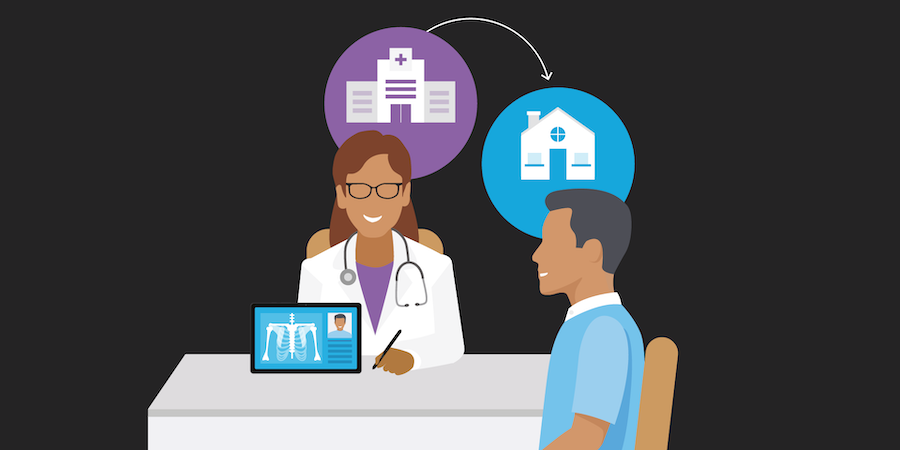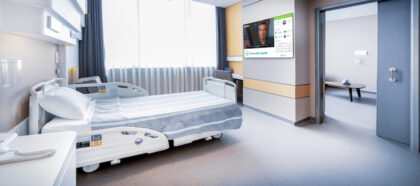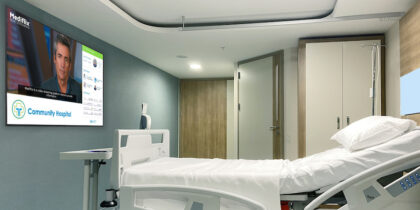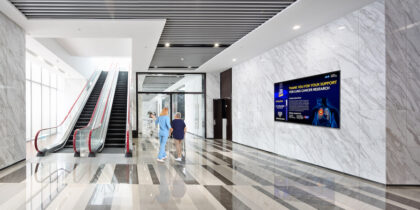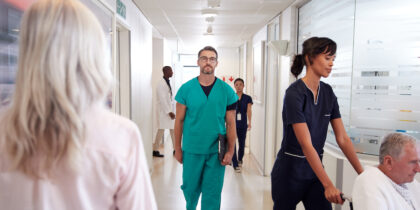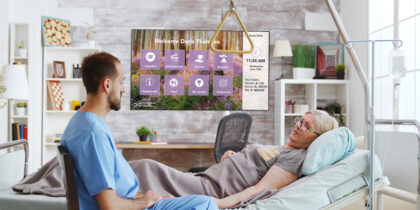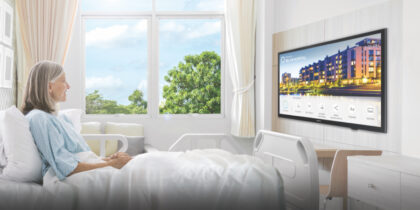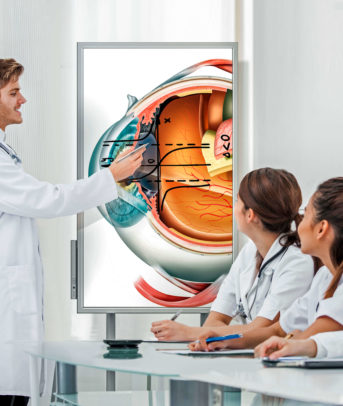Healthcare happens on the go — with nurses coming to patients’ bedsides, physicians conferring during shift changes and patients following their care protocol after being discharged. Mobile devices like tablets and smartphones allow healthcare providers and their patients to stay connected at all times, empowering clinicians and improving patient outcomes.
You can enhance your patient care with these nine best practices for mobile healthcare solutions:
1. Provide speedier check-in
You may have heard this one before: A patient enters a health facility and is handed a clipboard with multiple forms attached. They fill out those forms and hand them back to the registration desk. Those personnel then manually enter the information into their electronic health record (EHR) system. Then those papers are shredded to ensure privacy and comply with HIPAA. While there was once no way to avoid this inefficient, paper-based process, that is no longer the case.
Mobile tablets make the whole process faster, simpler and more secure. The patient uses the tablet to check in, and their information is uploaded seamlessly to the EHR database — no need for manual data entry or paper shredding.
2. Improve care team collaboration
Good patient care depends on effective collaboration. One way to enhance collaboration in a healthcare setting is to turn to real-time messaging platforms to improve the patient experience. These messaging tools help clinicians tend to patients’ needs more quickly. For example, a nurse can view a patient’s most recent lab results right from the patient’s bedside. The nurse can use a mobile device to message a physician in real time, and act on their response immediately.
3. Securely access real-time patient data
Better workflow means better patient care. Mobile devices streamline clinicians’ workflow by allowing care teams to take notes as they complete their rounds and meet with patients. By viewing lab results and collecting vital statistics on their smartphones or tablets, nurses and physicians can base their decisions on the most current information. And when they’re using HIPAA-compliant devices and apps, they can rest assured that patients’ private health information will stay secure.
4. Continued access to a desktop experience
As necessary as smartphones are for modern physicians and nurses, some tasks are still easier on a desktop. Samsung DeX allows clinicians to dock their smartphones to create a desktop-like computing experience with a full-size monitor, keyboard and mouse. This seamless shift from mobile to desktop simplifies workflows for physicians and nurses who are constantly on the move.
5. Streamline notifications and alerts
Wearable devices can be critical tools for monitoring and transmitting patients’ vital signs, such as heart rate, glucose levels or physical activity. When this data is made available to clinicians, it can help reduce hospital readmission rates. Care teams can receive a mobile alert if a patient’s vital signs reach a specific threshold, allowing providers to act at a moment’s notice.
6. Support accurate medication administration
Getting the right medication to the right patient — at the right dosage — is an essential clinical task, and one that is unfortunately subject to human error. To prevent medication errors, health facilities are embracing mobile technology that allows smartphones and tablets to scan barcodes. Just by scanning a patient’s wristband and their medication barcode, clinicians can ensure it’s a match. Mobile connectivity also allows medication records to be updated in real time, as clinicians log who administered what and when.
7. Improve patient experience
Hospitals can alleviate the stress of inpatient stays by providing patients with bedside tablets that connect them to a trove of relevent information and services. Patients can order meals, view their care schedule, see who’s on their care team and learn more about their conditions and what to expect as they recuperate. Hospitals can partner with software providers like Equiva to provide a secure platform and a customizable patient experience that doesn’t burden IT or nursing resources.
Improve the patient experience with mobile
From check-in to remote monitoring, get your free guide to elevating care with mobile technology. Download Now
Physicians and nurses create patients’ care plans, but patients have to follow through once they leave the hospital. Smart TVs in patient rooms provide access to educational videos about taking care of their specific health conditions. Nurses can use tablets to review discharge instructions and give patients access to further educational health content, available to them on demand.
8. Reinforce security policies
Despite the best efforts of IT teams to educate hospital employees about their security policies, mobile devices will still get lost, stolen or misused. Many hospitals have turned to mobile security platforms like Samsung Knox, which makes it easy for IT administrators to monitor and secure mobile data, as well as configure and provision multiple devices at the same time. Meanwhile, mobile device management (MDM) solutions allow IT to set mobile security policies and change them remotely, preventing unauthorized app installation or removal and remotely wiping company data if a device is lost or stolen.
9. Reduce readmission rates with remote patient monitoring
Medicare readmission rates are notoriously high. Nearly 20 percent of discharged Medicare patients are readmitted within 30 days, and an estimated 12 percent of those readmissions are potentially preventable. If even 10 percent of them are prevented, Medicare could save $1 billion annually. To better engage with patients and lower their readmission rates, many health facilities are turning to remote care management powered by tablets. Just how many U.S. healthcare organizations are adopting or planning to adopt remote patient monitoring (RPM) technology to help reduce their readmission rates? Over 80 percent.
These hospitals understand that mobile technology can help them efficiently and securely address many of the issues — from patient experience to provider communication — that face healthcare providers today.
From local practices to nationwide hospital networks, mobile health solutions can free up clinicians to work more efficiently — giving them more time for in-depth face time with patients. And learn more how mobile technology can improve the quality of patient care in this free, comprehensive guide.
